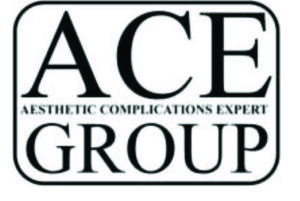 J Clin Aesthet Dermatol. 2018 Apr; 11(4): 61–62.
J Clin Aesthet Dermatol. 2018 Apr; 11(4): 61–62.
By Martyn King, MD
Introduction
Just like any other area of medicine, aesthetic practice requires a set of skills and resources to first identify and then manage potential complications. The Aesthetic Complications Expert (ACE) Group has produced a series of guidelines on how to manage some of the most common, as well as the most serious, problems that might occur, all of which are academic if you do not have the right tools at your disposal.
Background
An emergency kit is essential for anyone performing aesthetic treatments as in the event of a medical emergency, there is not enough time to prescribe and order the drugs required to treat it. Although this is not a problem for doctors and dentists, this is an obstacle to nurses performing aesthetic treatments who are not able to hold stock drugs. The British Association of Cosmetic Nurses are currently lobbying to have this restriction removed to allow safer practice; however, in the meantime, nurses only have the option of prescribing these drugs on a named patient basis or working in collaboration with a doctor or dentist who can hold these medicines as stock drugs.
According to Regulation 238 of the Human Medicine Regulations 2012, anybody can inject adrenaline and other drugs listed in Schedule 19 of the Regulations for the purpose of saving a life without breaking any laws; however, this does not get around the issue of how to obtain these drugs in the first place.
In the future, the ACE Group would like to facilitate a register of clinics who stock emergency drugs that may be accessed in the case of an emergency by nurses who are unable to stock these drugs. We’d also like to facilitate a register of experienced practitioners who might be able to give advice to others when diagnosis or treatment decisions are in doubt.
The Emergency Kit
An Aesthetic Complications Expert Group Consensus Paper
According to the latest guidance from the Resuscitation Council, the administration of chlorphenamine and hydrocortisone should be restricted to practitioners who are experienced in their use, prescribing these drugs on a frequent basis. It is unlikely that practitioners who are working solely in aesthetic medicine would be considered experienced and, therefore, the recommendation would be to call an ambulance and carry out basic life support before help arrives.
The emergency kit is appropriate for the vast majority of aesthetic practitioners but it is recommended that the clinical lead for each establishment carries out a risks assessment and have facilities and equipment suitable for the treatments offered. Clinics offering surgical treatments or treating high-risk patients, such as those who are very obese, might require oxygen and a defibrillator on site.
There are several other medications that might be useful to have available in order to prevent or manage a complication but are not required and so could be held as stock or prescribed on a named patient basis as required:
-
Iodipine 0.5% ophthalmic solution (5mg/mL)
-
Acyclovir 200mg tablets x 25
-
Topical antibiotic (e.g., fucidic acid)
-
Topical steroid (e.g., hydrocortisone, clobetasone butyrate, betamethasone)
-
Oral antibiotic (e.g., flucloxacillin 500mg QDS x 28 or clarithromycin 500mg BD x 14)
-
Oral antihistamine (e.g., loratadine 10mg)
Key Points
-
No one should be performing cosmetic treatments that do not have the knowledge, skills, and resources available to immediately deal with a complication.
-
Ensure that patients are fully informed of common and serious complications that might occur with a specific treatment; these should be highlighted on the consent form that they sign.
-
If a patient requires resuscitation or has been treated for an anaphylactic reaction, that patient should be admitted to the hospital via an ambulance, as further anaphylaxis might occur when the initial dose of adrenaline wears off.
-
Ensure that a Managing Aesthetic Complications folder is kept with the emergency kit in the case of a complication. This will allow easy reference to treatment algorithms and dosages and reconstitution for the drugs that might be required.
-
In the event of a complication, ensure contemporaneous records and photographs are made.
-
After a complication has occurred, ensure that there is appropriate follow-up until it has fully resolved.
-
Seek more expert help from practitioners experienced in managing complications when needed.
-
Complete a Significant Event form when available, and inform your medical defense insurance company at the earliest convenience.
-
Check the emergency kit on a monthly basis for any drugs that have expired and need replacing and replace any used drugs straight away.
-
For complications caused by a certain medical product, consider whether this needs reporting via the Yellow Card scheme to the MHRA and/or reporting to the manufacturer.
-
Ensure that all practitioners are up to date with resuscitation and basic life support.
-
Display Resuscitation/DRABC laminated posters in all clinical rooms.
-
Grab packs should be prepared by the laser protection advisor in clinics who offer laser/IPL treatments. These should provide details on the laser device, its power output, and the wavelength used and should be sent with the patient to the Eye Casualty in the event of an eye injury.
EMERGENCY KIT EXPERT GROUP: Martyn King, MD; Emma Davies, RN, NIP; Stephen Basset, MD; Sharon King, RN, NIP.
EMERGENCY KIT CONSENSUS GROUP: Sharon Bennet, RN, NIP; Ben Coyle, MD; David Eccleston, MD; Xavier Goodarzian, MD; Andrew Rankin, RN, NIP; Sam Robson, MD; Lou Sommereux; Askari Townshend, MD; Patrick Treacy, MD; Frances Turner-Trail, RN, NIP.

